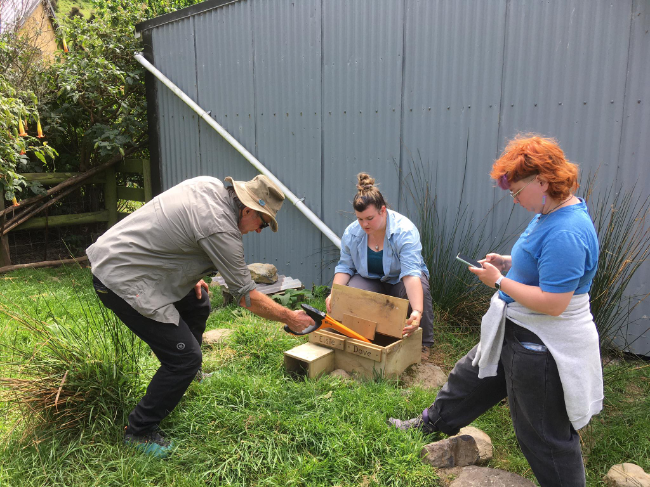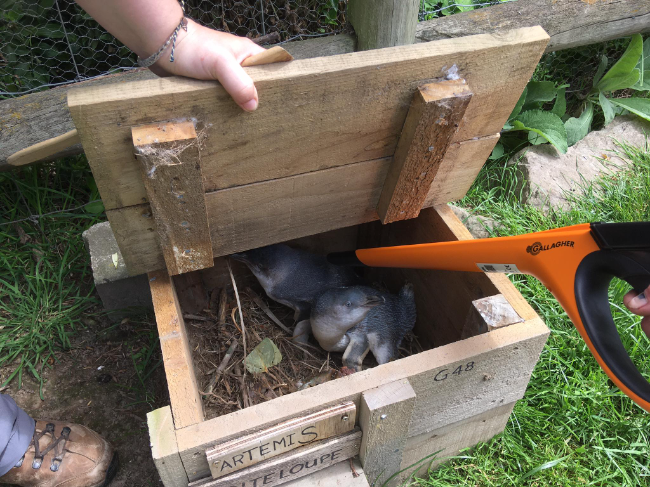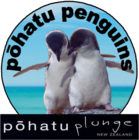What we do
Monitoring of a subset of the colony
Biology studies of the population using the latest world guidelines.
At Flea Bay/Pōhatu, we aim to protect kororā from ongoing population declines. To accomplish this, we need to know key demographic parameters such as reproductive success, adult survival, and recruitment probability. This can only be achieved by instituting a long-term, comprehensive monitoring program that includes marked individuals. We’re following national monitoring protocols which are based on expert knowledge and existing monitoring programs. In order to follow these protocols and ensure that our monitoring is consistent with other groups across New Zealand, we will adapt our current protocols to follow the ‘Tier 2’ guidelines and initiate ‘Tier 1’ monitoring by marking a subset of the population with passive integrated transponders (PIT tags). The demographics obtained from this population can then be compared with other populations and over time be used to assess trends and quantify the health of the New Zealand population of kororā.
Tier 1 monitoring comprises weekly or fortnightly monitoring rounds. We first mark the adult birds in the Tier 1 study area using PIT tags. All tagging is performed by trained operators (NZNBBS Level 2 or Level 3, or Level 1 under the direct supervision of a Level 3 trainer), following the Department of Conservation’s standard operating procedure. At these nests, we also mark chicks beginning at six weeks old (provided they have suitable body condition) following the same protocol. During marking, we record the penguin’s weight, bill measurements, and other observations. During each monitoring round, we check all penguins on the nests for PIT tags using an approved PIT-tag reader according to best practice. We record the nest contents (number of adults, eggs, or chicks) along with bird ID. As required, we conduct health checks of chicks and adults (e.g. checking mass by age of chick). All birds handled are lifted by hand and placed into canvas or cloth weigh bags to minimise stress and allow for safe and efficient handling.
Tier 2 monitoring comprises weekly or fortnightly monitoring rounds with no marking or handling of kororā. We record nest contents and other observations. We collect feathers and faeces off the ground that will be used for future diet research (e.g., stable isotope analysis, DNA metabarcoding) and DNA sexing of marked individuals.
All of those data will be shared in due course and are archived using a monitoring app Momento, with libraries specific to kororā monitoring developed by Dr. Thomas Mattern (currently being used by several other kororā monitoring programs). Collection of individual-based data allows us to determine life-history parameters for different cohorts and to determine if population decline/increases are associated with certain seasons. All marking and mortality data is also provided to the NZ Banding Office’s FALCON Database every year.
 |
 |
|
An introductory video about the importance that marine birds play in our marine environment, and the importance of research allowing us to understand their behaviours and marine habitat use to better protect them.
|
To celebrate the 10th anniversary of the Akaroa Marine Reserve and the 25th anniversary of the Pōhatu Marine Reserve, key stakeholders gathered on the 10th of March during Sea-week 2024 to commemorate these achievements for New Zealand marine wildlife. |
Hear from Dr Rachel Hickcox about the importance of monitoring a penguin colony. |
|
Discover the ins and outs of our Adopt a penguin program
|

